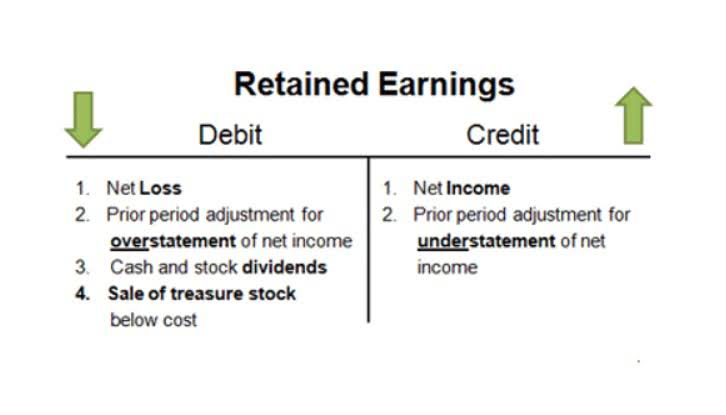
Here’s what you need to know to get started tracking account balances and getting a better understanding of where your business is headed. By recording the debit and credit halves of the transaction and then running a trial balance, the accountant can be sure that nothing has been online bookkeeping missed. If the books don’t balance, then something is wrong, and they need to go find it. T accounts are clear, visual representations of a business transactions that take the form of a “T” – one side for debits, one for credits.
Benefits of Using T-Accounts in Accounting
- The first thing you should do is create a budget and try to stick to it.
- Liabilities, Owner’s Equity and Revenue act in the opposite of them.
- Understanding trial balance requires knowledge of accounting concepts such as double-entry accounting, debits, credits, and balance sheet accounts.
- They’re super handy for both newbies and seasoned accountants to keep things clear and accurate.
- A bill issued by a seller of merchandise or by the provider of services.
An account with a balance that is the opposite of the normal balance. For example, Accumulated Depreciation is a contra asset account, because its credit balance is contra to the debit balance for an asset account. This is an owner’s equity account and as such you would expect a credit balance. Other examples include (1) the allowance for doubtful accounts, (2) discount on bonds payable, (3) sales returns and allowances, and (4) sales discounts. The contra accounts cause a reduction in the amounts reported.

Debit Side and Credit Side
- A ledger is simply a whole bunch of T-accounts grouped together.
- For the past 52 years, Harold Averkamp (CPA, MBA) has worked as an accounting supervisor, manager, consultant, university instructor, and innovator in teaching accounting online.
- Let’s say you want to account for the activities of Busy Bee Bakery and for the example’s sake, they have $500 in their cash account.
- The contra account here used to describe what occurred is baking equipment.
- (Purchases of equipment or supplies are not recorded in the purchases account.) This account reports the gross amount of purchases of merchandise.
They work with the double-entry accounting system to reduce the chance of errors. They are a visual way of Bookkeeping for Chiropractors recording all transactions that a company makes. Using T-accounts makes sure all entries are spot-on and the income statement shows the real financial performance. For more insights, visit our accounting general journal entries. They make sure expenses match up with the revenues they helped generate.
- With monthly billing, every purchase made on credit gives them a month to pay down the balance on their terms.
- Liabilities are what a business owes, therefore the account balance is the remaining debt that needs to be paid by the business for credit cards, loans, or lines of credit as examples.
- A T account ledger is an informal way of addressing a double-entry bookkeeping system.
- Liabilities also include amounts received in advance for a future sale or for a future service to be performed.
- A business owner can quickly look over T-accounts (such as the one in our example) in order to extract information.
Debtors (or Receivables) Ledger
For example, if you add $1,000 of cash coming in (a debit), with $500 cash going out (a credit). It’s true that you can make a T account for any account but let’s take an account like cash. If you were to get cash coming in, you would add it to the debit side of the “T” account. If your business is paying money out, then you would subtract to the credit side.
Double-Entry Accounting

Let’s say you just sold a one-year premium subscription for $20,000 and your client paid in cash. That makes T accounts a good place to start when thinking about bookkeeping and accounting, but also financial management. Using T accounts, you’ve figured out where everything goes, so you can record this transaction in your t accounts accounting software. A T-account isn’t a type of account in your books, but rather a device you use for visualizing how to record an accounting transaction. If the revenues earned are a main activity of the business, they are considered to be operating revenues.
- For many financial decisions a business makes, account balances should be consulted first.
- Owner’s equity is an important aspect of the balance sheet that represents the owner’s investment in the company.
- Under the accrual basis of accounting, the Service Revenues account reports the fees earned by a company during the time period indicated in the heading of the income statement.
- For example, when recording a sale, an arrow can be drawn from the Sales account to the Cash account to indicate that the Sales account is credited, while the Cash account is debited.
T-Account in Accounting
Since the gain is outside of the main activity of a business, it is reported as a nonoperating or other revenue on the company’s income statement. The balance sheet reports information as of a date (a point in time). By having many revenue accounts and a huge number of expense accounts, a company will be able to report detailed information on revenues and expenses throughout the year. If you want to review debits and credits, see the lesson on debits and credits. And for a review of the most common journal entries, see the lesson on basic accounting journal entries. For different account types, a debit and a credit may increase or decrease the account value.

You might think of G – I – R – L – S when recalling the accounts that are increased with a credit. You might think of D – E – A – L when recalling the accounts that are increased with a debit. The nature of each transaction can also be quickly determined. As previously mentioned, an account is the summary record of all transactions relating to a particular item in a business.







